Silent Era Home Page > Home Video > The Fall of the House of Usher

Reviews of silent film releases on home video.
Copyright © 1999-2024 by Carl Bennett
and the Silent Era Company.
All Rights Reserved. |
|
The Fall of the
House of Usher
[La Chute de la maison Usher]
(1928)
|
The French avant-garde film movement of the 1920s was expressed at its extremes in films by Marcel Duchamp, Jean Renoir, Man Ray and Luis Buñuel. But other films attempted to incorporate the abstract expressions of the avant garde tempered with traditional narrative, such as Germaine Dulac’s La souriante Madame Beudet (1922) and Jean Epstein’s La Chute de la maison Usher (1928).
A friend has been called to the isolated estate of Roderick Usher and his wife Madeleine. Usher is obsessively guarding his wife from the outside world and is obsessively painting her portrait. Madeleine’s health is failing as if the portrait were stealing away her life progressively as its completion nears. Still, Usher paints.
While this film’s depiction of Usher’s obsessive madness borders on the impressionistic, with many beautifully composed shots, Epstein’s film is more a literal adaptation of the Edgar Allan Poe story than was James Watson and Melville Webber’s decidedly abstract and expressionistic American film version, The Fall of the House of Usher (which is available on DVD in the Treasures from American Film Archives boxset), also produced in 1928.
Epstein utilizes multiple exposures, slow motion, closeups and montage to convey his stylized interpretation of the odd Usher environment. Some visual statements, such as views of the house pillars with wind-blown draperies and neglected tree leaves littering the floors, border on pure impressionism. A shot of candles burning, that seems to run in reverse motion (actually caused by the slow original camera cranking speed of about 16-18 frames per second), creates an quietly unworldly effect. Books fall from shelves in slow motion; static views of the large, empty estate, and of the dead estate grounds; the dolly shots with Usher out of focus in the foreground and the sharp backgrounds moving by: the composite effect of these and other shots all visually express Usher’s warped psyche and the deathly pall surrounding him. Wind and fire and their combination, smoke, figure prominently in the production's most-striking images. The undefined contribution to the film by Luis Buñuel is perhaps most felt in the film’s oddest images. Clearly, the most appealing aspect of the film is its striking visuals.
— Carl Bennett
|
 All Day Entertainment All Day Entertainment
2001 DVD edition
The Fall of the House of Usher (1928), black & white, 66 minutes, not rated.
All Day Entertainment, distributed by Image Entertainment,
ADED0618DVD, UPC 0-14381-06182-6.
One single-sided, single-layered, Region 0 NTSC DVD disc, 1.33:1 aspect ratio image in full-frame 4:3 (720 x 480 pixels) interlaced scan MPEG-2 format, SDR (standard dynamic range), 7.5 Mbps average video bit rate, 192 Kbps audio bit rate, Dolby Digital 48 kHz 2.0 mono sound, French language intertitles, no foreign language subtitles, 12 chapter stops; standard DVD keepcase; $24.99.
Release date: 15 May 2001.
Country of origin: USA
Ratings (1-10): video: 7 / audio: 5 / additional content: 0 / overall: 7.
|

The film has been transferred full-frame at proper running speed from a preservation print from the Raymond Rohauer collection. The 35mm print features a broad range of greytones and is moderately marred with speckles, dust, scratches and the beginnings of stock decomposition. The print contains the original French intertitles, with English translations spoken on the soundtrack by actor Jean-Pierre Aumont. As to the video transfer, take note. Artificial edge enhancement (video sharpening) has apparently not been utilized (this is a good thing). And the encoded bit rate of the DVD video image is above average for most discs (averaging 7.5 megabytes per second), with less MPEG-2 video compression and thus more image information per frame, rendering a smoother more filmlike overall image. However . . .
We did note that, in some shots in the video transfer, transitions from medium greytones to black in the darker portions of the image are not smooth. Black and dark grey pixels flit around in the deep grey shadows like clouds of black flies. Those shadow transitions are alive with swarming pixels while the transitions from highlights through medium greys are as smooth as you could want (which discounts any assumption that film grain might be the cause). The effect is quite pronounced in the shot, 12:00 into the film, where Usher escorts the physician out of the room and continues for several shots thereafter until 13:41. The effect is again quite apparent in the brief shot from 15:59 to 16:03 of Usher walking about playing the guitar, and is seen to greater or lesser degree in isolated shots throughout. The effect is minimized but still detectable on small television monitors. Our conjecture — and this is not anything more than an educated guess — is that some shots in the source print were darker than most, and that some attempt was made after the video transfer had been completed to extract as much image detail as possible on a shot-by-shot basis from the shadows of these darker sequences by manipulating the video image’s greyscale contrast curves (which could increase the contrast between the pixels in the shadow areas of the image creating the effect we’ve described). Also, a multicolored video glitch momentarily spots Usher’s collar near the bottom of the picture for several frames beginning at 33:07. Despite these periodically distracting sections, the majority of the shots in the video transfer are quite smooth and replicate the source print’s best qualities well.
We liked the music score that was compiled from existing recordings and edited together by Rolande de Candé and Renée Lichtig. The music is appropriately spooky in places and seems just off-kilter enough to convey the Usher madness and the avant garde pedegree of the film. But, because the DVD audio track has been replicated from the monaural optical soundtrack of the Rohauer source print, viewers cannot expect a state-of-the-art sonic experience.
We admire Epstein’s film for its haunting and sometimes stunning images, and edition producer David Kalat has generally done a good job of bringing the film to DVD, but the video transfer is periodically distracting due to the deficiencies described above. Even so, when we had completed viewing the disc and were faced with the DVD’s main menu screen, we were compelled — helplessly and compulsively like Roderick Usher — to watch the film again.
|
|
USA: Click the logomark to purchase this Region 0 NTSC DVD edition from Amazon.com. Your purchase supports Silent Era.
|

|
|
|
Canada: Click the logomark to purchase this Region 0 NTSC DVD edition from Amazon.ca. Your purchase supports Silent Era .
|

|
|
 Potemkine Films / Agnès B. DVD Potemkine Films / Agnès B. DVD
2014 DVD edition
Jean Epstein (1924-1948), black & white, 945 minutes total, not rated,
including La Chute de la maison Usher [The Fall of the House of Usher] (1928), black & white, 61 minutes, not rated.
Potemkine Films / Agnès B. DVD,
EDV2390, UPC 3-545020-028278.
Eight single-sided, dual-layered, Region 2 PAL DVD discs, 1.33:1 aspect ratio image in full-frame 4:3 (720 x 576 pixels) interlaced scan MPEG-2 format, SDR (standard dynamic range), ? Mbps average video bit rate, ? Kbps audio bit rate, Dolby Digital 48 kHz 2.0 stereo sound, French language intertitles, optional English language subtitles, chapter stops; three multidisc DVD keepcases in cardboard slipcase; €99,90.
Release date: 6 May 2014.
Country of origin: France
|

This PAL DVD boxset edition has been mastered from high-quality 35mm source materials, likely held by La Cinémathèque française film archive.
The film is presented with a music score.
North American collectors will need a region-free PAL DVD player capable of outputting an NTSC-compatible signal to view this edition.
|
|
France: Click the logomark to purchase this Region 2 PAL DVD edition from Amazon.fr. Your purchase supports Silent Era.
|

|
|
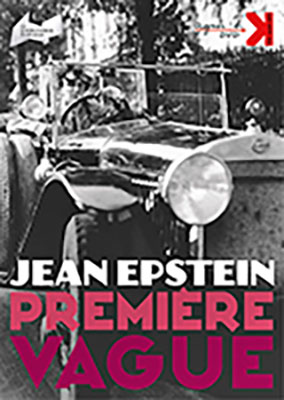 Potemkine Films / Agnès B. DVD Potemkine Films / Agnès B. DVD
2014 DVD edition
Jean Epstein: Première Vague (1926-1928), black & white, 271 minutes total, not rated,
including Mauprat (1926), black & white, 89 minutes, not rated, La Glace à trois faces [The Three-Sided Mirror] (1927), black & white, 38 minutes, not rated, Six et demi, onze [Six-and-a-Half Times Eleven] (1928), black & white, 83 minutes, not rated, and La Chute de la maison Usher [The Fall of the House of Usher] (1928), black & white, 61 minutes, not rated.
Potemkine Films / Agnès B. DVD,
EDV2390, unknown UPC number.
Two single-sided, dual-layered, Region 0 PAL DVD discs, 1.33:1 aspect ratio image in full-frame 4:3 (720 x 576 pixels) interlaced scan MPEG-2 format, SDR (standard dynamic range), ? Mbps average video bit rate, ? Kbps audio bit rate, Dolby Digital 48 kHz 2.0 stereo sound, French language intertitles, optional English language subtitles, chapter stops; two-disc DVD keepcase in cardboard slipcase?; €39,90.
Release date: 3 June 2014.
Country of origin: France
|

This PAL DVD edition has been mastered from high-quality 35mm source materials, most of them held by La Cinémathèque française film archive.
The films are presented with music scores performed by Neil Brand, Stephen Horne and Gabriel Thibaudeau.
The supplemental material includes an interview with Cristophe Wall-Romana, and an alternative ending for Six et demi, onze (1928).
North American collectors will need a region-free PAL DVD player capable of outputting an NTSC-compatible signal to view this edition.
|
|
France: Click the logomark to purchase this Region 0 PAL DVD edition from Amazon.fr. Your purchase supports Silent Era.
|

|
|
 IVC IVC
2013 DVD edition
The Fall of the House of Usher (1928), black & white, 47 minutes, not rated.
IVC Limited, unknown catalog number, unknown UPC number.
One single-sided, single-layered, Region 2 NTSC DVD disc, 1.33:1 aspect ratio image in full-frame 4:3 (720 x 480 pixels) interlaced scan MPEG-2 format, SDR (standard dynamic range), ? Mbps average video bit rate, ? Kbps audio bit rate, Dolby Digital 48 kHz 2.0 mono sound, French language intertitles, Japanese language subtitles, chapter stops; standard DVD keepcase; ¥1,944.
Release date: 22 February 2013.
Country of origin: Japan
|
|
This Japanese DVD edition is likely a repackaging of the out-of-print edition noted below and may be mastered from 35mm print materials. The short running time should be noted.
The film is accompanied by a music score.
North American collectors will need a region-free DVD player to view this edition.
|
|
This Region 0 NTSC DVD edition is . . .
|

|
|
 IVC IVC
2003 DVD edition
The Fall of the House of Usher (1928), black & white, 47 minutes, not rated.
IVC Limited, IVCF-2171, unknown UPC number.
One single-sided, single-layered, Region 2 NTSC DVD disc, 1.33:1 aspect ratio image in full-frame 4:3 (720 x 480 pixels) interlaced scan MPEG-2 format, SDR (standard dynamic range), ? Mbps average video bit rate, ? Kbps audio bit rate, Dolby Digital 48 kHz 2.0 mono sound, French language intertitles, Japanese language subtitles, chapter stops; standard DVD keepcase; ¥3800.
Release date: 20 June 2003.
Country of origin: Japan
|
|
This Japanese DVD edition may be mastered from 35mm print materials. The short running time should be noted.
The disc features reference materials, and cast bios.
North American collectors will need a region-free DVD player to view this edition.
|
|
This Region 0 NTSC DVD edition is . . .
|

|
|
|
Other silent era JEAN EPSTEIN films available on home video.
Other FRENCH FILMS of the silent era available on home video.
Other AVANT-GARDE FILMS of the silent era available on home video.
Other HORROR FILMS of the silent era available on home video.
|
|

SUPPORT SILENT ERA
USING THESE LINKS
WHEN SHOPPING AT
AMAZON



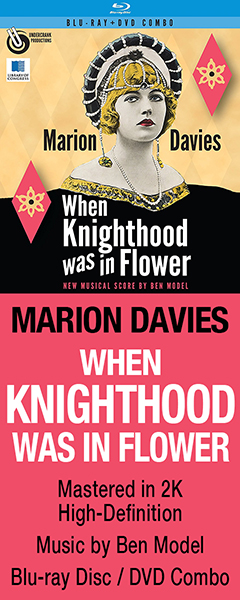






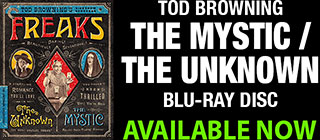


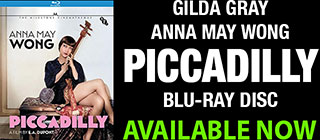








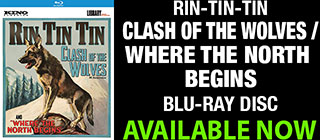
















|





































